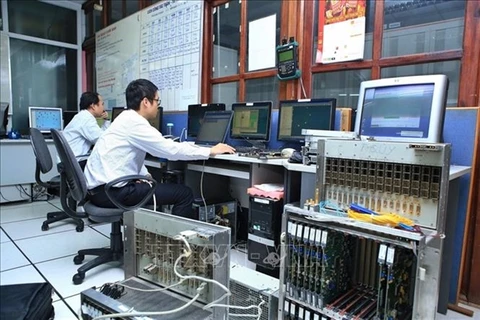Hanoi (VNA) – In February and following months, Vietnam will focus its resources on three growth drivers of investment, consumption and export, said Minister-Chairman of the Government Office Tran Van Son at the regular Cabinet press conference on February 2 following its monthly teleconference with localities.
Son said that at this conference, all Government members agreed that in the coming time, there are more difficulties and challenges than opportunities and advantages.
Macro economy remains stable
Therefore, Prime Minister Pham Minh Chinh asked ministries, sectors and localities to proactively address arising problems and step up three strategic breakthroughs namely institutions, infrastructure and human resources.
He requested giving priority to maintaining macro-economic stability, controlling inflation, propelling growth and ensuring major balances of the economy. "It is necessary to ensure the balanced, rational and effectively management of the exchange and interest rates as well as harmonize inflation control and growth, monetary and fiscal policies, and domestic and foreign situations," the PM stressed.
The Government leader also stressed the importance of the adoption of a flexible and effective monetary policy in close and synchronous combination with fiscal and other policies.
According to the PM, in January, the macro-economy continued to be stabilized, inflation was controlled and major balances maintained. State budget revenue increased by 12.3% compared to the estimate, and 8.1% year-on-year.
 N Total retail sales of goods and services in the month rises by 20% year-on-year. (Photo: VietnamPlus)
N Total retail sales of goods and services in the month rises by 20% year-on-year. (Photo: VietnamPlus)
Total retail sales of goods and services in the month rose by 20% against 2022 and 34.2% compared to 2019.
As both imports and exports saw a decrease, the country still enjoyed a trade surplus of 3.6 billion USD in the first month of 2023.
In January, total import-export turnover reached 46.56 billion USD, down 17.3% over the previous month and 25% year on year, with exports dropping 21.3% to 25.08 billion USD, and imports falling 28.9% to 21.48 billion USD.
While the domestic sector saw a trade deficit of 1.04 billion USD, the foreign-invested sector (including crude oil) posted a surplus of 4.64 billion USD.
Experts attributed the result to the long New Year and Lunar New Year (Tet) holidays, which were all in January, reducing the number of working days. Last year, the Tet holiday fell in February.
The manufacturing-processing sector earned the highest export revenue with 22.32 billion USD, accounting for 89% of the country’s total.
Meanwhile, there were three goods groups with imports of over 1 billion USD.
In January, the US remained the biggest importer of Vietnamese goods with a revenue of about 7.6 billion USD, while China was the biggest exporter to Vietnam with 8.1 billion USD.
The GSO held that many countries are facing the threat of inflation and economic recession, leading to reduction in global consumption, thus affecting Vietnam’s import-export activities.
Export activities showed signs of slowing down from the fourth quarter of 2022 with fewer orders, it said, adding that 2023 is likely to be a tough year for Vietnam’s import-export.
According to the Ministry of Industry and Trade (MoIT), Vietnam’s exports depend on many outside factors, but tax reduction from free trade agreements that Vietnam has joined and the strengthening of socio-economic recovery and development will motivate exports this year.
In 2023, the MoIT sets a target of a 6-percent rise in goods export revenue, with trade surplus maintained./.
























